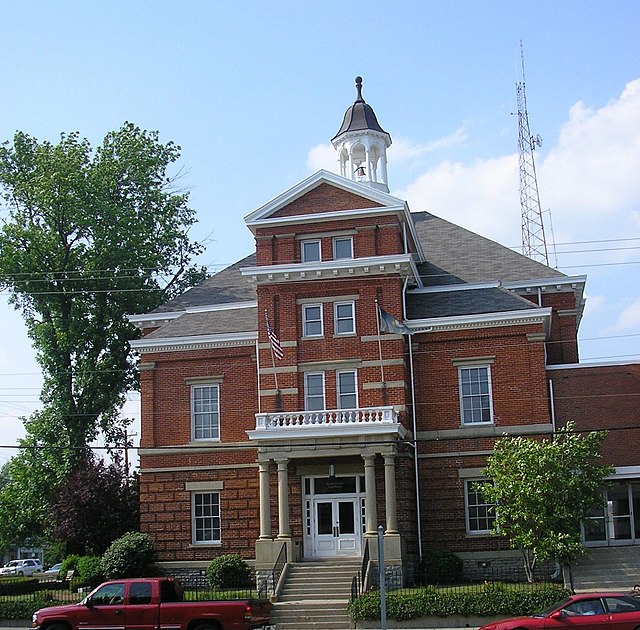Big Bone Lick State Park is located at Big Bone in Boone County, Kentucky. The name of the park comes from the Pleistocene megafauna fossils found there. Mammoths are believed to have been drawn to this location by a salt lick deposited around the sulfur springs. Other animals including forms of bison, caribou, deer, elk, horse, mastodon, moose, musk ox, peccary, ground sloths, wolves, black bears, stag moose, saber-toothed cats, and possibly tapir also grazed the vegetation and salty earth around the springs that the animals relied on for their diet.
Big Bone Lick State Park
Statue of a woolly mammoth stuck in the soft earth, showing how the fossils were created.
Anatomist William Hunter suggested in 1768 that this mastodon tooth came from an extinct type of carnivorous elephant.
1807 letter from Thomas Jefferson to George Rogers Clark requesting that the bones Rogers had collected at Big Bone Lick be packed and shipped to a New Orleans collector, who would then forward them to Washington.
Boone County is a county located on the Ohio River in the northernmost part of the Commonwealth of Kentucky. As of the 2020 census, the population was 135,968, making it the fourth-most populous county in Kentucky. Its county seat is Burlington. The county was formed in 1798 from a portion of Campbell County. and was named for frontiersman Daniel Boone. Boone County, with Kenton and Campbell Counties, is of the Northern Kentucky metro area, and the Cincinnati-Middletown, OH-KY-IN Metropolitan Statistical Area. It is the location of the Cincinnati/Northern Kentucky International Airport, which serves Cincinnati and the tri-state area.
The old Boone County courthouse in Burlington
Burlington from the air, looking east






